
The mountain calls: the Arocs is the Citem team's trusted companion
Vehicle & Technology
Alpine artistry – how Citem climbers and truck drivers wrap up entire rock faces.
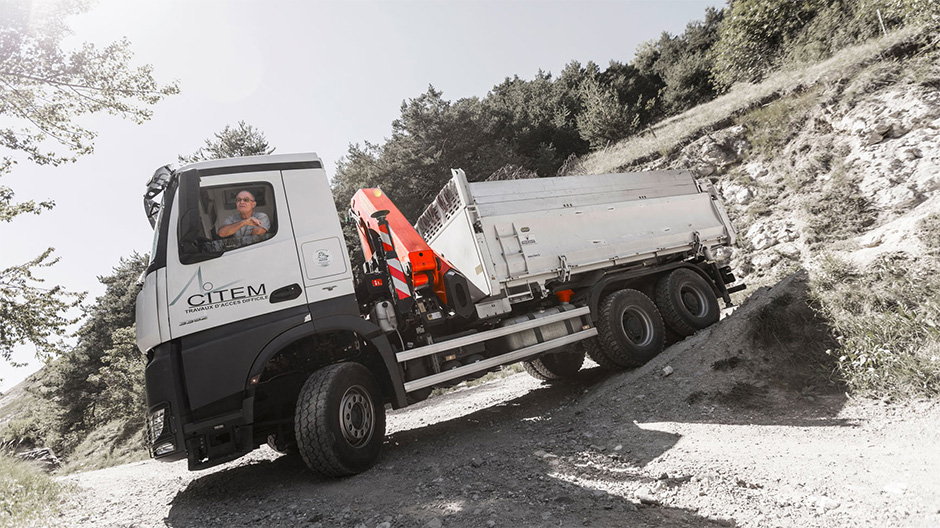
Up here there is nothing but forest tracks – no problem for experienced Arocs driver Alain.
“I often pick up materials from all over France.”
– Alain Stephan, Arocs driver
A few more metres, then Pak is where he needs to be. He manages to grab a ledge with his right arm and pulls himself close against to the rock face. Is the rope long enough for him to move freely? In his left hand, he holds the steel plate which will secure the net at exactly this point. A few metres away, his colleague Franck is cursing under his breath, as beads of sweat roll down the men's necks. This may be routine – but it certainly isn't child's play.
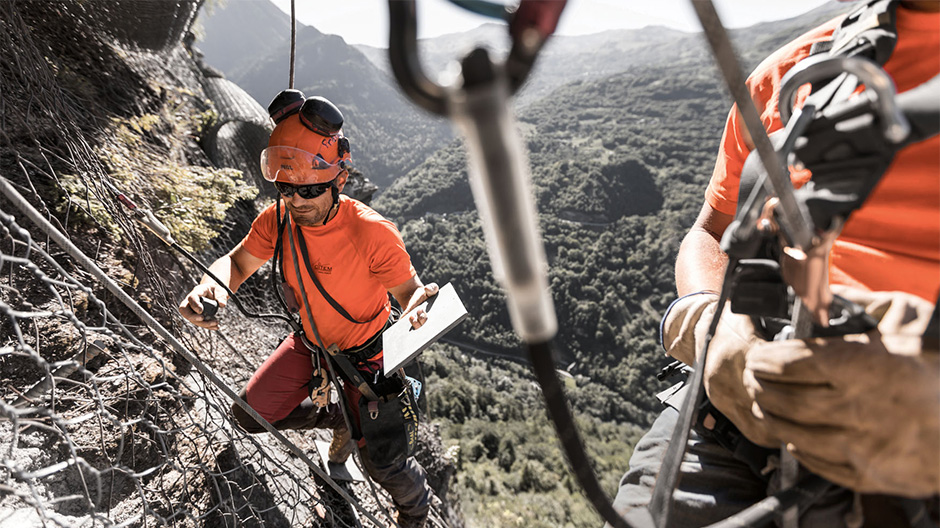
Franck attaches part of the net that will later secure the rock face.
Pak – whose real name is Pierre-Alexandre Keller – and his colleagues did the preparation work for the net installation yesterday. This involves climbing across the slope, drilling new holes into the rock face and screwing in the threaded rods. Yet another tough job. Each threaded rod will hold a steel plate measuring 30 by 30 centimetres and weighing several kilograms which the men are now fitting and securing with nuts. The steel netting moves around as the steel plates are fitted, each time causing a shower of small stones to rain down on the workers' helmets and goggles. The protective equipment is clearly essential here.
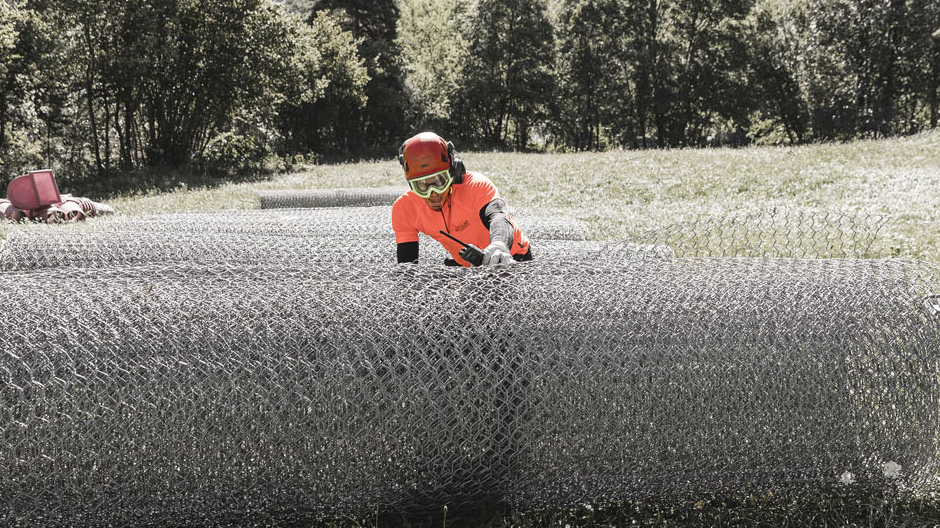
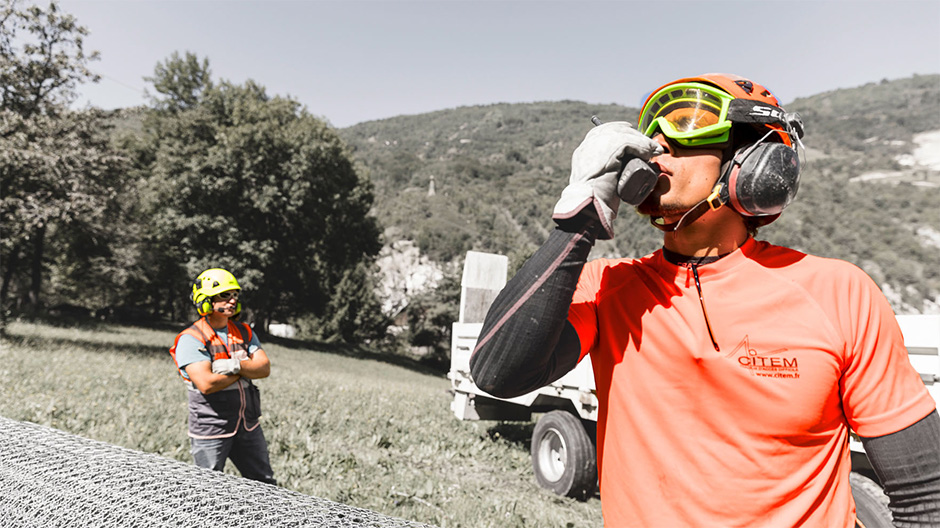
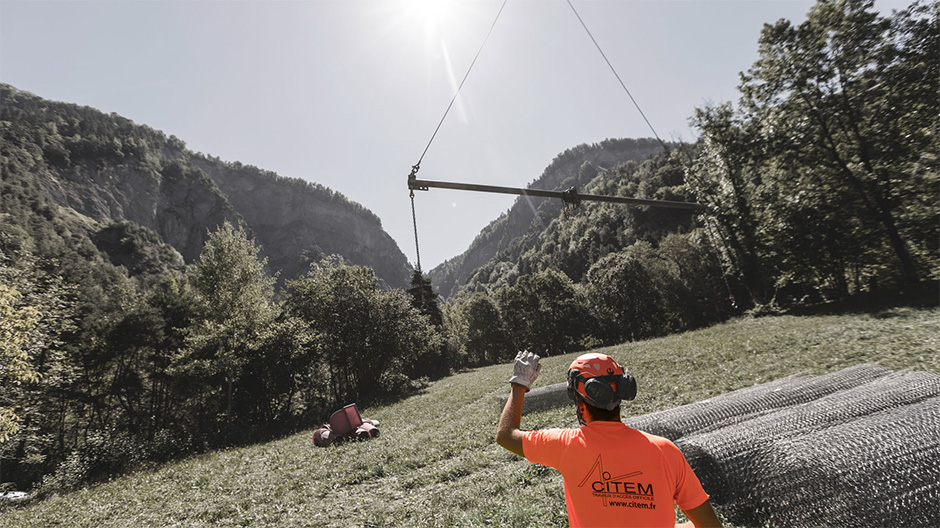
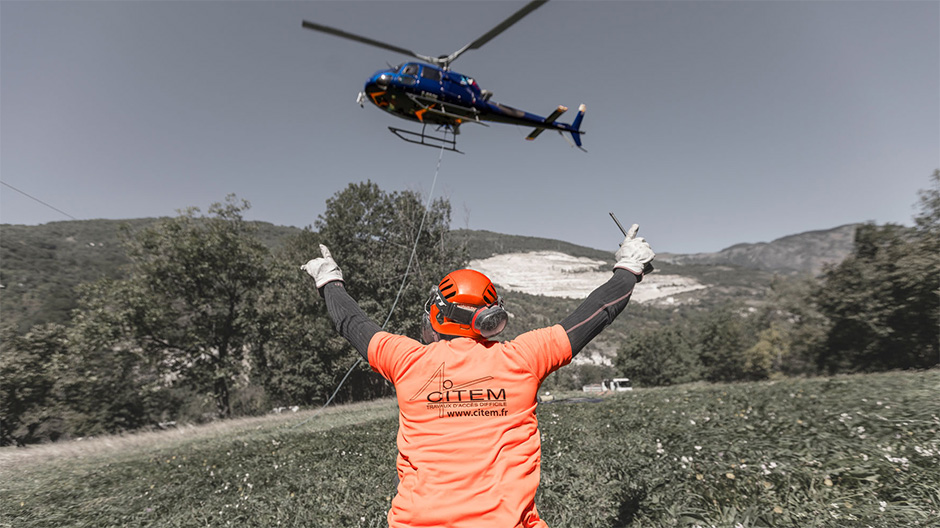
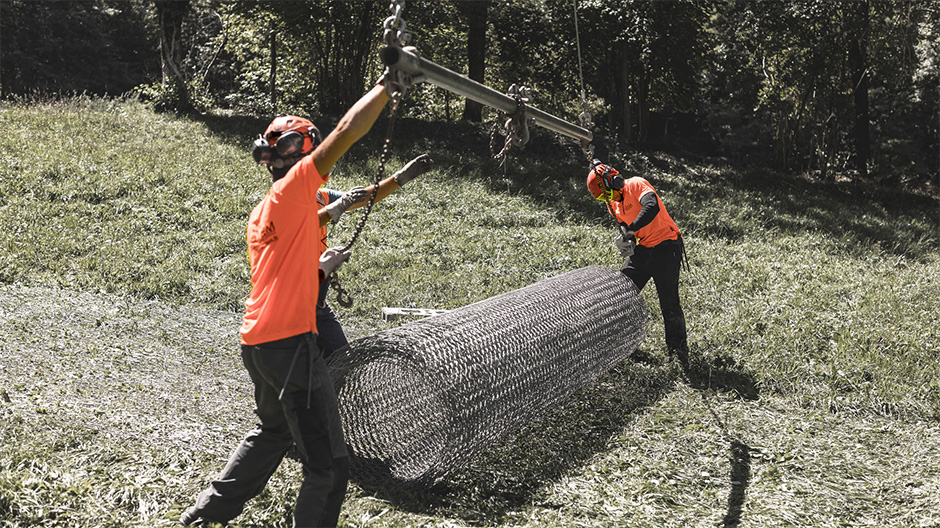
It is hard work to secure the individual fixtures. “We need around 100 of them for the net to be secure,” Pak explains. The 30-year-old climber has been working at Citem for one year now. Based in Saint-Jean-de-Maurienne near Grenoble in the French Alps, the company is specialised in performing construction work in mountainous terrain. Their main line of work is securing steep slopes and rock faces in order to protect roads, buildings and facilities from falling rocks, in this particular instance for a hydroelectric power station. There is a water channel which drops down behind the rock face. The power station's turbines convert the energy of the water from the mountains into electrical power.
As high as possible.
Yet the mountaineers are only the final link in the chain of specialists required to get the steel nets into the mountains. At the very beginning we have Alain Stephan. With his 3-axle Arocs 2651 vehicle, he is tasked with transporting equipment, machines and tonnes of materials and delivering them as close as possible to the construction site. "Sometimes I end up transporting material from all over France," says Alain, who has been doing this job for 22 years.
At the depot, Alain loads his vehicle with all the materials required at the construction site, such as steel coils, steel anchors, compressors and other machines, brings them to the camp of the construction site and arranges them in the ideal position for the next specialist job – the helicopter transfer. In doing so, the Arocs adds at least the same number of hours in crane operation as driving hours to its account.
Navy materials on the mountain.
Alain has positioned the thick coils of galvanised wire netting in a big meadow next to the track for the helicopter. The men from Citem are standing together and having a quick coffee. Four-metre-wide coils with 2.7 millimetre wire thickness, then even stronger nets like those used for submarine barriers – you don't get that from the DIY store, do you? Alain laughs. “For a long time we had access to the navy's reserves. But the supplies have been used up. Now we get our materials from a Russian manufacturer,” he explains.
Alain would love to transport the materials all the way to the top in his Arocs. The only road in the direction of the construction site ends in a mountain village several kilometres from here. The rest of the journey is on dirt roads and forest tracks which require the use of cross-country vehicles. And on the final 100 metres up to the rock ledge where the men have to install the nets, there is no track at all. “It means we have no alternative but to use a helicopter,” Alain says.
This job is always a race against time. To secure the country's mountainsides, it is presumed that the French government has to invest several hundred million euros every year. So there is plenty to do for Citem, but the weather has to be right. There is no chance of doing this kind of work in the winter. In poor weather conditions, the helicopter can't be flown and Pak and his colleagues aren't able to work on the rock face. Even during the active construction season, you will often experience sudden changes in the weather – these are high-alpine conditions after all.
“This is perfect weather. If not today, when else would we get the nets up there?” says Pak. The thumping sound of rotor blades announces the arrival of the helicopter. The men don their hearing protection and the aircraft lands just 50 metres away. After a brief word with the pilots, the helicopter is quickly back in the air.
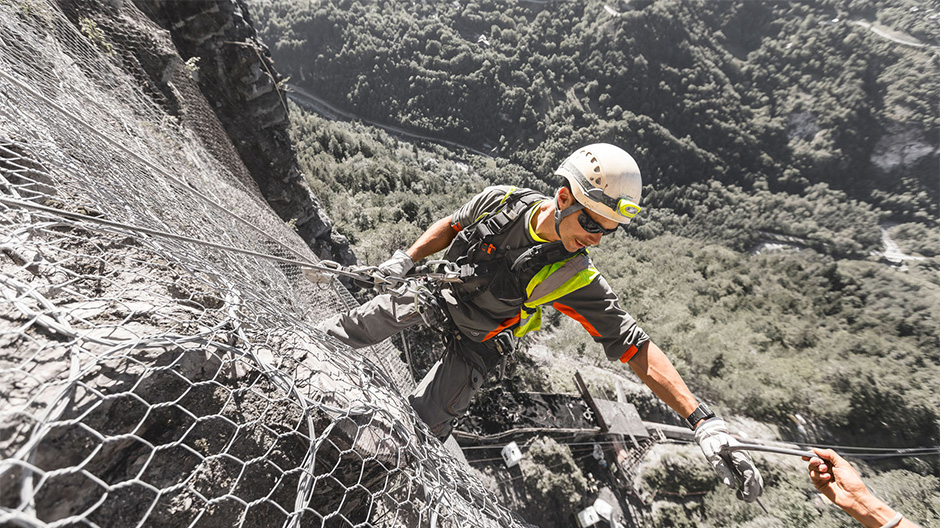
Speed is the name of the game.
The first net is suspended to the bearing above the rock face. The gears have to work correctly for this: the weight of the coils creates a powerful downward pulling force. The Citem workers are already preparing the next coil. As soon as the helicopter returns, the next one has to be hooked up. Speed is imperative because every minute of helicopter flight is precious. Unless everyone here works extremely efficiently, the company will make a loss on the job.
Back to Pak and Franck. They're now standing on the narrow ledge above the rock face. Pak is taking in the view: “I love the mountains. I can't get enough of them.” Alongside his work with Citem, he is training to become a mountain guide. But there isn't much time to dream about the next alpine adventure. All of the steel nets have to be secured to the rock face today. The weather is expected to turn in the next few days. And the job would then be in jeopardy.
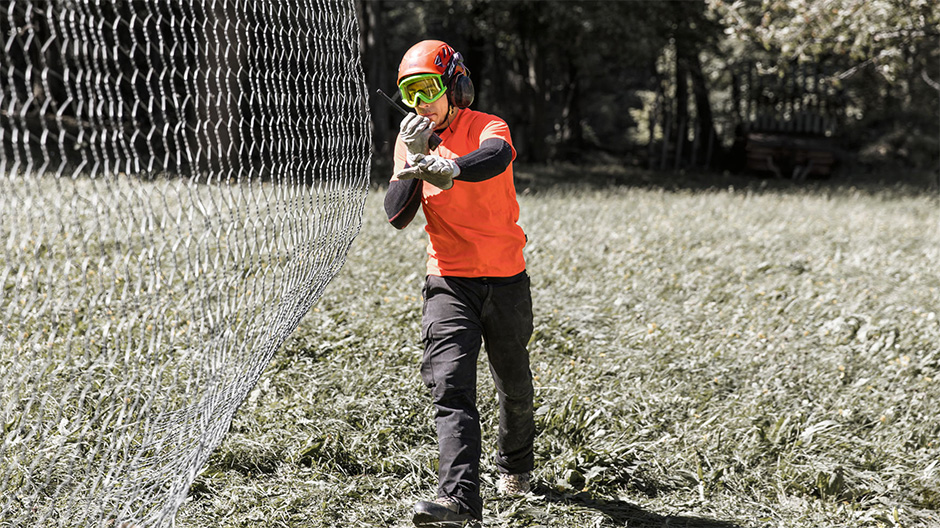
Helmet, goggles, hearing protection, gloves – Pak in his working gear.
Now for the finishing touches.
The mountainside has been perfectly prepared for the nets – any overhanging trees have already been removed by the boys from Citem, loose stones and chunks have been lifted out of the rock face and the surface has been prepared metre by metre for the net installation. Pak and his team are making good headway. The critical sections of the rock face have been wrapped and the ground at the foot of the face is secured. The finishing touches can wait until tomorrow.
Alain drives back down into the valley once more to pick up materials for a quarry on the other side of the mountain. Another team from Citem is working there to secure the rock faces. The entire journey up and back down again is on unpaved roads. “Nothing dramatic,” he calls out light-heartedly and closes the driver's door behind him.
Photos: Alex Kraus




Comment
Please log in to post a comment.
4 comments
Die Bilder sind ziemlich aussagekräftig.
Die Bilder sind ziemlich aussagekräftig.
Grüße Jörg 👍💪👍💪👍💪⛟😎
Grüße Jörg 👍💪👍💪👍💪⛟😎